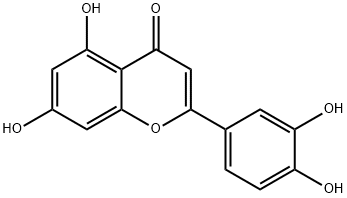Luteolin: mechanism of action and clinical applications
Aug 1,2023
General Description
Luteolin exerts its therapeutic effects through multiple mechanisms, including inhibiting pro-inflammatory cytokines, modulating inflammatory pathways, scavenging free radicals, and inhibiting tumor growth and invasion. It shows promising applications in the treatment of skin cancer, wound healing, and psoriasis by reducing inflammation and promoting healthy cellular processes. Luteolin's ability to inhibit TLR signaling, neutrophil activation, and immune cell differentiation suggests its potential as a natural alternative to synthetic components with fewer side effects. Overall, luteolin holds potential in various inflammatory conditions and may offer benefits in mitigating symptoms and promoting healing.
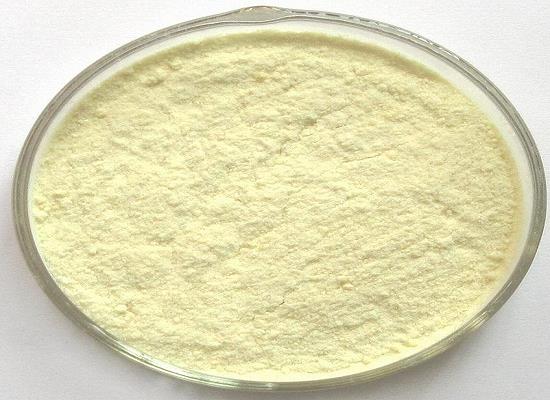
Figure 1. Luteolin
Mechanism of action
Luteolin's mechanism of action is thought to be through multiple pathways, including inhibition of pro-inflammatory cytokines, such as tumor necrosis factor-alpha (TNF-alpha) and interleukin-1 beta (IL-1beta), as well as the inhibition of cyclooxygenase-2 (COX-2) and nuclear factor kappa B (NF-kB) activation. Luteolin's anti-inflammatory effects may also be due to its ability to modulate the activation of mitogen-activated protein kinases (MAPK) and nuclear factor erythroid 2-related factor 2 (Nrf2), which are both involved in the regulation of inflammatory responses. Additionally, Luteolin has been found to have antioxidant properties and can scavenge free radicals, which are thought to play a role in the development and progression of inflammation. In summary, Luteolin's anti-inflammatory effects are thought to be due to its ability to inhibit pro-inflammatory cytokines, modulate the activation of MAPK and Nrf2, scavenge free radicals, and inhibit COX-2 and NF-kB activation. These mechanisms contribute to its potential therapeutic benefits in the treatment of various inflammatory diseases. 1
Clinical applications
Skin cancer
Luteolin has multiple benefits in the treatment of skin cancer. It can absorb UV radiation and reduce its transmission, acting as a first line of defense. Luteolin prevents the formation of UVB-induced CPDs (cyclobutane pyrimidine dimers) both in vitro and in vivo, which contribute to nonmelanoma skin cancer development. UVB exposure is a complete carcinogen capable of initiating, promoting, and progressing carcinogenesis, with the majority of skin cancers attributed to it. Luteolin inhibits cell proliferation, induces apoptosis, and causes cell cycle arrest in melanoma cells. It also reduces tumor growth, invasion, and expression of MMP-2 and MMP-9 through the PI3K/Akt pathway in mouse xenograft models. Luteolin delays the development of UVB-induced tumors and inhibits COX-2, AP-1, NF-κB, and Akt signaling pathways in mice, potentially preventing skin cancer. Additionally, luteolin selectively increases the survival of healthy keratinocytes and exerts pro-oxidative effects on melanoma cells. It reduces UVB-induced skin inflammation and inhibits metastasis by reversing epithelial-mesenchymal transition (EMT) in epidermoid carcinoma cells. 2
Wound healing
Luteolin has been studied for its application in wound healing. The wound healing process consists of four phases: hemostasis, inflammation, proliferation, and remodeling. In the hemostasis phase, luteolin treatment has shown to reduce clot mass, inhibit pro-coagulant enzymes, and platelet activation. However, these effects may counteract wound healing at this early stage. During the inflammatory phase, luteolin's anti-inflammatory properties may be beneficial by reducing leukocyte migration and plasma leakage. In the proliferative phase, luteolin exhibits anti-angiogenic abilities by inhibiting vascular endothelial growth factor (VEGF) signaling, which may hinder wound healing but could be advantageous for other diseases like gastric cancer. Despite in vitro studies suggesting a detrimental effect on wound healing, in vivo studies using murine and rat models have shown that luteolin promotes wound closure, increases tensile strength, collagen production, epithelial regeneration, and reduces inflammation. Therefore, while there are contradictory findings in vitro, luteolin has demonstrated a beneficial effect on wound healing in vivo. 3
Psoriasis
Luteolin shows potential in the treatment of psoriasis, a chronic inflammatory disease affecting the skin and joints. With its anti-inflammatory and antioxidant properties, luteolin could offer benefits to psoriasis patients with fewer side effects compared to synthetic components. Psoriasis is triggered by unspecific insults that release DNA and RNA, activating innate immune cells through Toll-like receptors (TLRs). Luteolin inhibits TLR signaling by reducing TLR expression, blocking signaling complex formation, and inhibiting downstream signaling molecules. It also reduces the release of neutrophil extracellular traps (NETs) and reactive oxygen species (ROS) by neutrophils. In mice, luteolin treatment decreases the number of dendritic cells and reduces the release of pro-inflammatory cytokines. Mast cells, important producers of cytokines involved in psoriasis, are also affected by luteolin, inhibiting their actions. Luteolin influences T cell proliferation, secretion of IFN-γ, and the differentiation of T cell subsets. In a murine psoriasis model, luteolin reduced TH1 and TH17 cells while increasing TH2 and Treg cells. These findings suggest that luteolin has the potential to mitigate the symptoms of psoriasis by modulating immune responses and reducing inflammation. 4
Reference
1. Gendrisch F, Esser PR, Schempp CM, Wölfle U. Luteolin as a modulator of skin aging and inflammation. Biofactors, 2021, 47(2):170-180.
2. Imran M, Rauf A, Abu-Izneid T, Nadeem M, Shariati MA, Khan IA, et al. Luteolin, a flavonoid, as an anticancer agent: a review. Biomed Pharmacother, 2019, 112:108612.
3. Choi JH, Kim YS, Shin CH, Lee HJ, Kim S. Antithrombotic activities of luteolin in vitro and in vivo: antithrombotic potential of luteolin. J Biochem Mol Toxicol, 2015, 29:552– 558.
4. Kwon EY, Choi MS. Luteolin targets the toll-like receptor signaling pathway in prevention of hepatic and adipocyte fibrosis and insulin resistance in diet-induced obese mice. Nutrients, 2018, 10: 1415.
- Related articles
- Related Qustion
- Luteolin: activities and pharmacokinetics Dec 18, 2023
Luteolin is a bioactive flavonoid with anti-inflammatory, anti-cancer properties and pharmacokinetics enhanced by nanotechnology for therapeutic use.
- The effect of dietary Luteolin on glycolipid metabolism disorder Nov 23, 2023
Luteolin, as a natural compound with a wide range of biological activities, are an ideal dietary supplement for maintaining metabolic homeostasis, especially significantly favouring carbohydrate and lipid metabolism.
- Luteolin - A flavone common in plants Oct 30, 2019
Luteolin, 3′,4′,5,7-tetrahydroxyflavone, is a common flavonoid that exists in many types of plants including fruits, vegetables, and medicinal herbs.
Indigo can treat psoriasis by regulating keratinocytes and inhibiting cell proliferation and differentiation. Combination therapy shows promise.....
Aug 1,2023APIL(-)-Epinephrine regulates blood pressure, heart rate, metabolism, and the immune system. It is used in resuscitation and anesthesia.....
Aug 2,2023APILuteolin
491-70-3You may like
- Luteolin
-
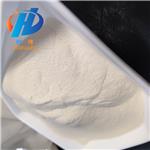
- $10.00/ kg
- 2024-04-28
- CAS:491-70-3
- Min. Order: 1kg
- Purity: 99.8%
- Supply Ability: 10000ton
- Luteolin
-
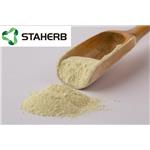
- $10.00 / 1kg
- 2024-04-28
- CAS:497-70-3
- Min. Order: 1kg
- Purity: 98%HPLC
- Supply Ability: 10000
- luteolin
-
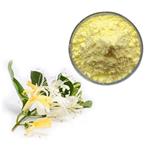
- $0.00 / 1KG
- 2024-04-28
- CAS:491-70-3
- Min. Order: 1KG
- Purity: ≥98% HPLC
- Supply Ability: 1000KG




